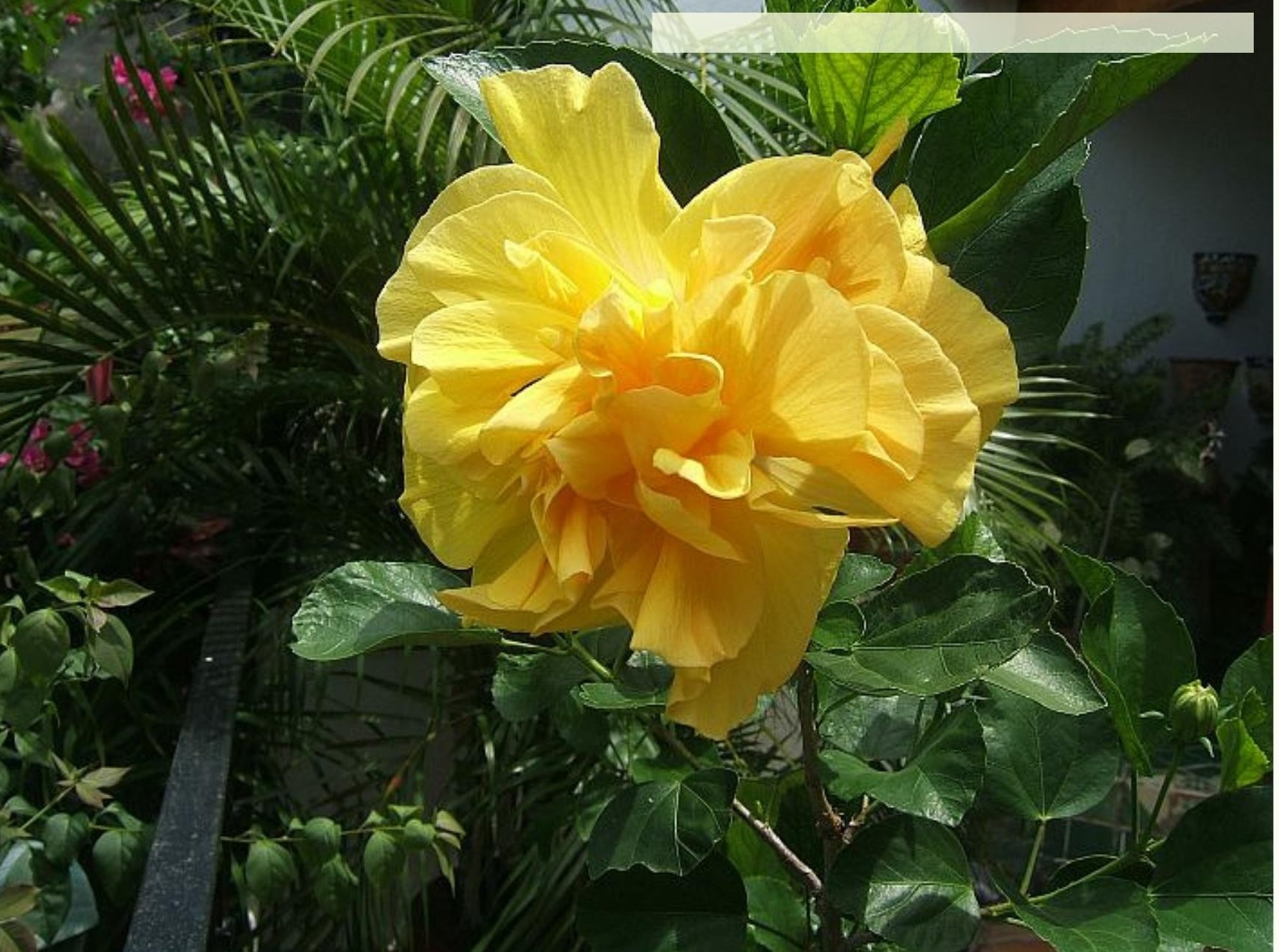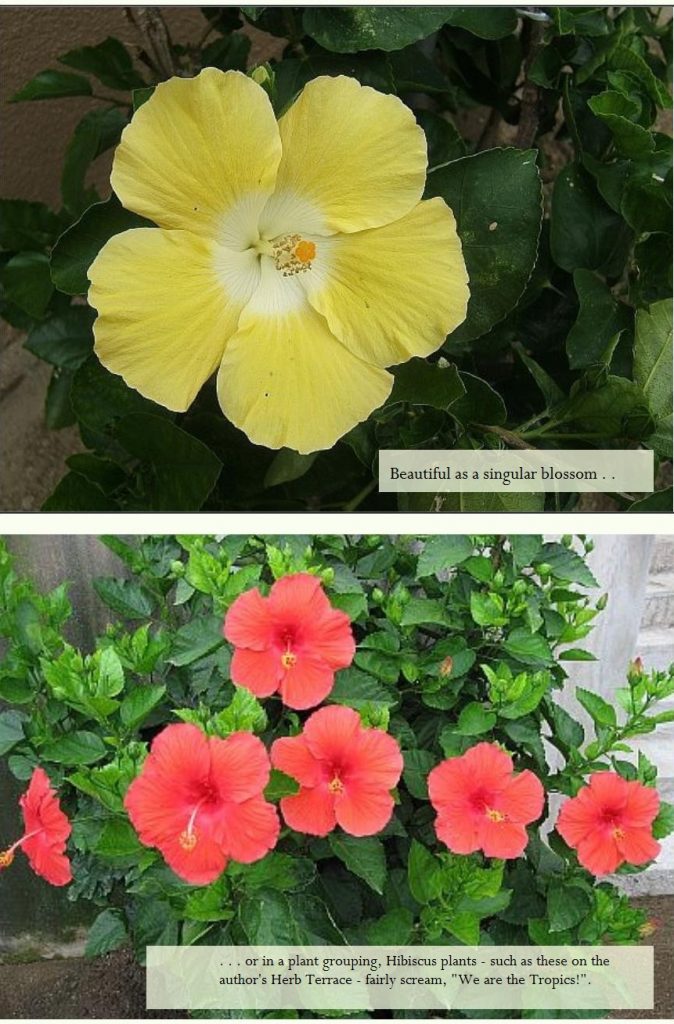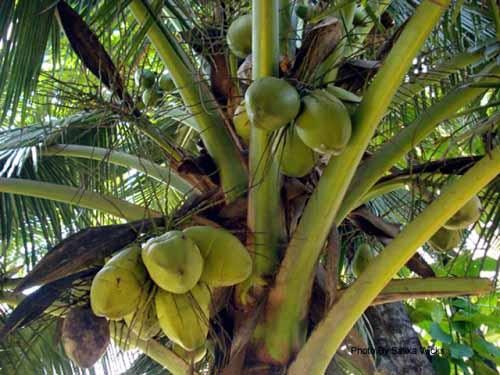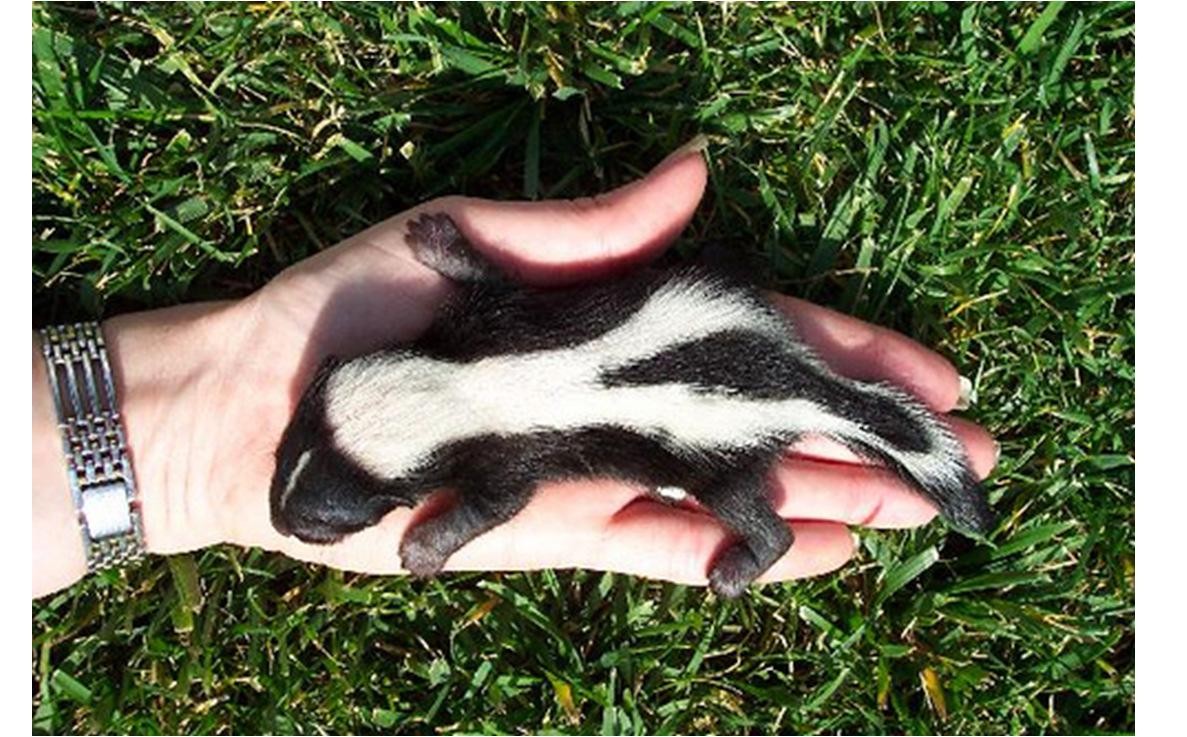By Tommy Clarkson from the April 2010 Edition
Family: MALVACEAE
ALSO KNOWN AS ROSE OF SHARON, ROSE OF CHINA, ROSE
MALLOW, ROSELLA, FLOR DE JAMAICA, AND SHRUB ALTHACEAE

A brilliantly colored hibiscus is to the tropics what beans, around here, are to frijoles!
These sun loving beauties are evergreen. Throughout the warm, temperate, subtropical and tropical regions of the world, the vivid, five-petaled, mallowlike hibiscus flowers bloom in a wide array of colors. Popular as free standing plants or landscape shrubs, they may also be effectively incorporated into tropical gardens or dramatically placed on terraces or balconies in pots. Both singular and double varieties are readily available.
The large, showy and, usually, trumpet shaped flowers of this species are what give these plants their great allure. (Some may recall Dorothy Lamour wearing one in her hair in the Bing Crosby/Bob Hope “Road” pictures of the dare I say it 40’s!) In its totality, this genus consists of around 250 different annual and perennial herbaceous plants sized from smallish, woody shrubs to the awesome, 70-80 foot hibiscus macrophyllus trees.
With the flower itself the general focus of attention of this family, it is worthy of note that the plant entirety of the noble appearing hibiscus elatus is recognized as one of the most strikingly attractive tropical flowering trees is the world.
However, it is the eye striking beauty of the blooms which most of us seek. The majority of the hibiscus plants sport five petaled flowers the largest being nearly one foot across – with longish, protruding central stamens and pistol.
In fact, beyond the blooms, a few of larger species are singularly magnificent appearing plants wholly unto themselves. Some have simply beautiful leaves. (In fact, the leaves of the hibiscus acetosella are purportedly edible and can be cooked or used in salads.)
 In Mexico an herbal tea, agua de Flor de Jamaica, is made by boiling the dehydrated hibiscus flowers with sugar it tastes somewhat like cranberry juice. Jams are made from it in the Caribbean. In Polynesia, the hibiscus bark fibers are used to make grass skirts and even wigs. In Southern India a ground paste shampoo of hibiscus leaves and flowers solves dandruff problems, while its petals are used to cure fever and its roots stop coughs.
In Mexico an herbal tea, agua de Flor de Jamaica, is made by boiling the dehydrated hibiscus flowers with sugar it tastes somewhat like cranberry juice. Jams are made from it in the Caribbean. In Polynesia, the hibiscus bark fibers are used to make grass skirts and even wigs. In Southern India a ground paste shampoo of hibiscus leaves and flowers solves dandruff problems, while its petals are used to cure fever and its roots stop coughs.
But for those who seek only the beauty of its flowers, remember, it requires regular moisture, sandy, well drained, loamy soil and some peat or pulverized coconut coir more about that last item in a later column. And, recurring fertilization is a plus. There are a wide array of cultivars and hybrids spawned from the hibiscus rosa sinensis and schizopetalus. They can be propagated by seed, cuttings or simple plantings. As long as the temperature stays warm, most of these are perpetual bloomers. Plant, enjoy and every morning upon sighting your little beauties, greet them with a hearty “Hi biscus”!
Download the full edition or view it online
—
Tommy Clarkson is a bit of a renaissance man. He’s lived and worked in locales as disparate as the 1.2 square mile island of Kwajalein to war-torn Iraq, from aboard he and Patty’s boat berthed out of Sea Bright, NJ to Thailand, Germany, Hawaii and Viet Nam; He’s taught classes and courses on creative writing and mass communications from the elementary grades to graduate level; He’s spoken to a wide array of meetings, conferences and assemblages on topics as varied as Buddhism, strategic marketing and tropical plants; In the latter category he and Patty’s recently book, “The Civilized Jungle” – written for the lay gardener – has been heralded as “the best tropical plant book in the last ten years”; And, according to Trip Advisor, their spectacular tropical creation – Ola Brisa Gardens – is the “Number One Tour destination in Manzanillo”.




You must be logged in to post a comment.